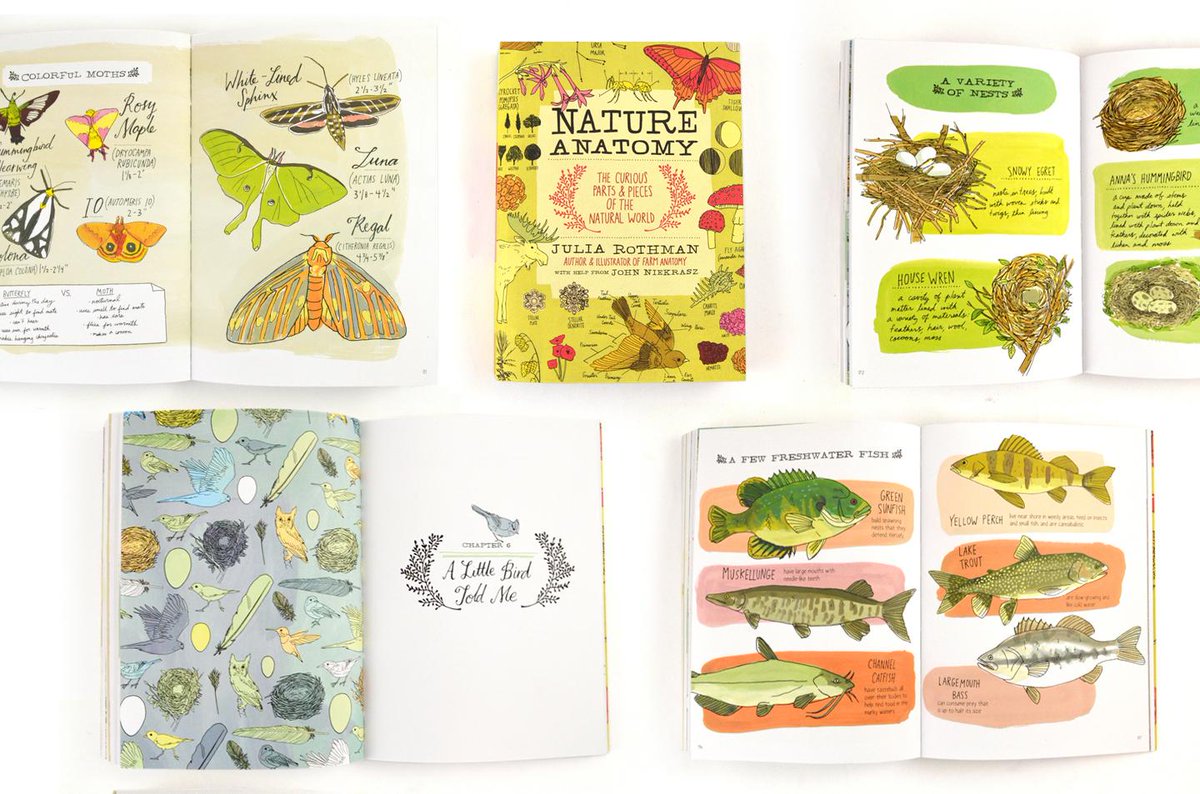In an age where the intersection of art and science seems increasingly paramount, the anticipation of what future books could bring us is palpable. One such work that is generating significant buzz is “Nature Anatomy” by Julia Rothman. This exquisite fusion of illustration and scientific inquiry is not merely a book; it’s an invitation into a realm where the complexities of the natural world are explored with both reverence and curiosity. As we delve deeper into our expectation of future literary treasures, let us explore the multifaceted dimensions of “Nature Anatomy” and what it portends for readers.
First and foremost, “Nature Anatomy” captivates with its stunning visuals. Rothman’s illustrations are not simply decorative but serve to elucidate intricate concepts. They portray flora and fauna with unparalleled finesse, allowing readers to appreciate the minutiae of nature that often go unnoticed. This focus on visual learning underscores a critical trend in contemporary education: the increasing emphasis on graphic literacy. As we look to the future, it’s essential to recognize the value of images in disseminating knowledge. As technology progresses and our visual culture expands, books like “Nature Anatomy” may pave the way for more visually rich educational resources.
Moreover, “Nature Anatomy” diverges from traditional textbooks by presenting information through storytelling. Rothman intertwines anecdotal narratives and factual information, creating a dynamic reading experience that appeals to a wide array of readers, from budding naturalists to seasoned scientists. This narrative approach not only makes the content more accessible but invites emotional engagement with the material. As narratives become a central theme in educational methodologies, the implications for future works, especially in the fields of science and nature, are enormous. Readers are increasingly seeking connections between knowledge and experience, and books that can bridge this gap will likely find a receptive audience.
The book’s structure merits attention as well. Each chapter is dedicated to a different aspect of nature, allowing for a modular exploration of ecosystems, anatomy, and interrelationship among species. This segmented approach caters to modern readers’ ever-decreasing attention spans. In an era defined by rapid information consumption, the ability to digest content in concise, bite-sized blocks is invaluable. Future publications may well take a leaf from Rothman’s methodology, drawing inspiration from modular design principles that embrace brevity while retaining depth.
In addition, “Nature Anatomy” serves as a reminder of the urgency of ecological awareness. Through its vivid representations of wildlife and plant life, it ignites a sense of wonder and responsibility towards our environment. The urgency to foster ecological stewardship is echoed in modern discourse, making this book a relevant artifact in ongoing environmental conversations. Anticipating future trends, literary works that engage with climate change and biodiversity loss will likely gain traction. Literature not only reflects societal concerns but also has the power to incite change, driving the next generation towards sustainable practices and an enhanced appreciation for the intricacies of nature.
Furthermore, Rothman’s meticulous attention to detail in “Nature Anatomy” speaks volumes about the significance of research in creating credible educational materials. The book is extensively researched, providing accurate representations and information. This integration of art and science exemplifies a growing appreciation for interdisciplinary approaches—integrating the analytic and the creative. As we move forward, the cognitive boundaries between disciplines may blur, prompting future works that blend artistic expression with scientific rigor seamlessly. The expectation grows for literature that can pull from diverse fields, fostering creativity while adhering to factual integrity.
As we consider “Nature Anatomy,” it becomes evident that it embodies a larger trend towards holistic education, bridging the gaps between disciplines. Readers are beginning to crave books that cater not only to intellectual curiosity but also emotional and aesthetic appreciation. The future of literature, therefore, may mirror Rothman’s work by leveraging an interdisciplinary ethos, harmonizing the realms of science, art, and storytelling. This holistic approach could result in the emergence of new genres that prioritize the interconnectedness of ideas and experiences.
Moreover, the potential for engagement does not end with the printed page. In an increasingly digital world, the online presence of works like “Nature Anatomy” can extend their influence far beyond traditional readership. The ability to engage with content through interactive platforms offers myriad possibilities for expanded learning experiences. Expect to see more books accompanied by digital companions—apps, interactive websites, or online communities that encourage dialogue and exploration. This expansion of the book experience illustrates a trajectory toward more immersive learning environments in literature, allowing for greater interaction and personal connection to the material.
Finally, “Nature Anatomy” not only highlights the beauty of the natural world but also represents a pivotal moment in literary evolution. As society navigates the multifaceted challenges of the contemporary landscape, the role of literature as a conduit for knowledge, imagination, and awareness will only grow. Future readers will undoubtedly expect books that not only inform but inspire action and foster respect for the beautifully intricate web of life around us.
In conclusion, “Nature Anatomy” serves as a beacon, illuminating the path toward an educational future rich in texture, depth, and possibility. Its blend of illustration, storytelling, and scientific insight sets a precedent for what literature can achieve. The future beckons with promise, as a new generation of books may well continue the dialogue initiated by Rothman, bridging the chasms between nature, art, and the human experience.









Leave a Comment